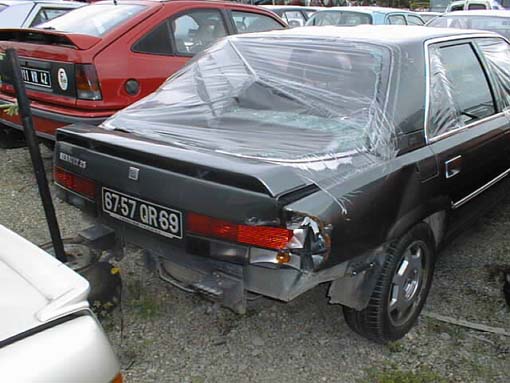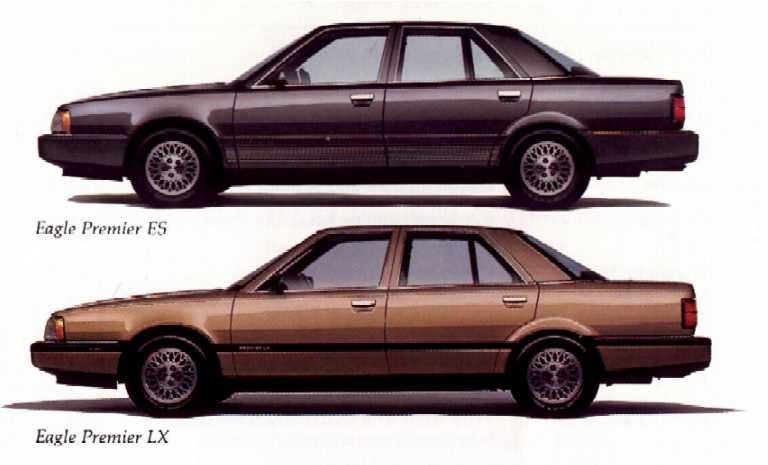
Premier and Monaco Styling
The project that led to the Eagle Premier (and the Dodge Monaco that followed later) was initiated by Jose Dadeurwaerder in 1982, when he was the President of American Motors. Mr. Dadeurwaerder came to AMC from Renault, which had bought 22% of AMC in 1979, and increased its share to 46% in 1980. The car was to be based on an upcoming new Renault model, the R-25, just as the AMC-built Renault Alliance and Renault Encore were based on the Renault R-9 and R-11. The Premier, however, was to be more extensively Americanized than the Alliance and Encore. The Euro-spec R-25 was only built as a 4-door hatchback, as seen below.
(Sorry for the body damage on the cars, but they were the only photos available of the R-25.)

You will also notice that some other details of the Euro-spec cars are different: the hood is a clam-shell style hood, and the grille is different, especially in that the leading edge of the hood wraps over into the grille area. Also the parking lights do not wrap around as much as the Premier's do, owing to the different standards in the US.

The final styling was the result of a styling competition between the AMC in-house styling department (still headed at the time by Dick Teague), and several outside design consultants. The competition was winnowed to AMC styling and ItalDesign; the exterior styling submitted by ItalDesign was selected, and all of the early Premiers wore small badges on the bumper wrap-around (on the front part of the front fender) that said "design guigiaro". The interior design was largely the work of the AMC in-house group, although it appears some Renault parts were incorporated into the design - especially of the area of the steering column.

The cars were available in two trim levels: LX (base) and ES (highline). The LX came standard with a front split bench seat, narrow black rub moldings, steel wheels, and the 2.5 litre AMC 4 cylinder (as used in Jeep Cherokees); the ES got standard wide lower body cladding, bucket seats with a console, aluminum road wheels, and the 3.0 litre PRV (Peugeot-Renault-Volvo) V-6.

The Dodge Monaco was the result of a couple different factors working together: the Premier was judged by the motoring press to be more capable than the largest FWD Dodge (the Dynasty), Chrysler needed to build enough cars to use 260,000 of the V-6 engines within 5 years' time, and Chrysler wanted to keep the Bramalea factory working as busily as possible. The result was a badge-engineered Premier that was given a name from Mopar's past: the Dodge Monaco




The only real changes were to the grille (which on the Monaco was a body-colored version of the standard, center-divided, four-horizontal-bar grille that many other Dodges of the era had). As you can see above (sorry for the size), the upper trim level of Monaco got the lower body cladding, while the lower trim level did not. The other difference with previous years' Premiers was that Monacos were available only with the 3.0 litre V-6, which was a change common to the Premier as well: the 4-cylinder option was dropped after the 1989 model year.
Later Premiers and Monacos received something of a "freshening", with the big emphasis placed on the taillights: instead of rectangular, the revised taillights had a ovoid, tapered look. Some other details, mainly the grilles, were updated, and with that the "design giugiaro" bages were deleted, as his work had been changed.